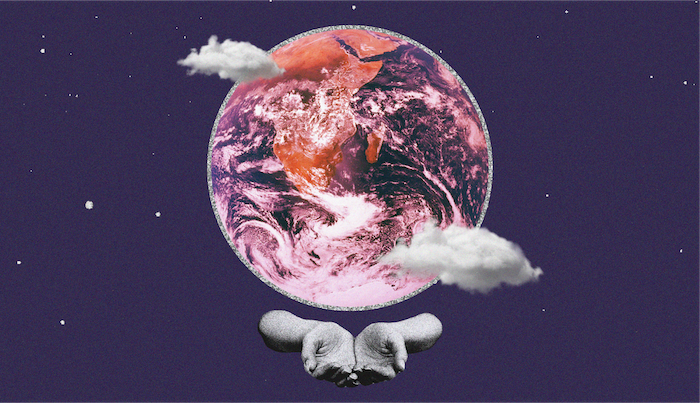Birth Charts for Beginners: Four Things You Need to Know

Astrology is a tool with many applications. And if the ultimate goal of human life is self-realization, as spiritual sages and masters suggest, understanding your birth chart is one of the most powerful tools we possess. The study of astrology is vast and seemingly endless; it requires patience, humility, and dedication. You can never stop learning. But with humility, it will continue to reveal its secrets. Consider this a starting point in your journey of learning to read your natal chart. Be patient with yourself and apply your understanding in layers. Over time, your holistic understanding of your chart, astrology, and most importantly yourself will deepen.
Developing a basic understanding of and familiarity with the four main components of a chart—houses, planets, signs, and aspects—along with their symbols and glyphs, is key to any reading. Pro tip: Keep the Table of Dignities handy. This will help you judge the strength and condition of a planet, and its ability to perform.
This 2019 reading is a shortcut to the stars!
••••••••
HOUSES
Houses tell you “where” something is being played out. A natal chart has 12 houses, each representing an area of an individual’s life. For example, activity in the 6th house highlights health, work, daily, life, and routines among other things. The 9 o’clock position on the chart marks the ascendant and beginning of the 1st house. The houses continue from the 1st to the 12th in a counter-clockwise direction.
•••••••••••••••••••••••••••
The cardinal houses signify action.
House of Self; associated with Aries
House of Home; associated with Cancer
House of Partnership; associated with Libra
House of Social Status; associated with Capricorn
•••••••••••••••••••••••••••
The fixed houses center on the resources available to you.
House of Possessions; associated with Taurus
House of Pleasure; associated with Leo
House of Transformation; associated with Scorpio
House of Friendships; associated with Aquarius
•••••••••••••••••••••••••••
The mutable houses represent the impetus of any action.
House of Communication; associated with Gemini
House of Health; associated with Virgo
House of Philosophy; associated with Sagittarius
House of Unconscious; associated with Pisces
••••••••
PLANETS
The planets tell you “what” is being played out or “who” is acting something out. There are seven traditional planets that we can see with the naked eye, and they each represent a specific arena of thoughts, feelings, and archetypes.
•••••••••••••••••••••••••••
Sun*
Self, ego, primary consciousness, father.
Moon*
Emotions, mother, child, one’s style of nurturing, security, nourishment, inner nature.
Communication, the mind, duality, transportation, speech, siblings.
Attraction and creation, relationships, love, beauty, money, values.
Separates, passion, sex, drive, motivation, war, anger.
Knowledge, wisdom, teachers, foreign cultures, expansive, magnifies.
Time, gateway, boundaries, authority figures, structure, tradition, teachers.
*The sun and moon are considered planets in astrology and are also referred to as the luminaries.
Modern astrologers will also use outer planets Uranus, Neptune, and Pluto, which speak to a collective experience, marking generational themes. Some astrologers also work with asteroids and minor planets. Begin with the traditional seven, adding more elements to your interpretations as your understanding increases.
••••••••
SIGNS
The Signs tell you “how” something is playing out. There are 12 Signs divided into three modalities, or qualities (cardinal, fixed, mutable) and four elements (fire, earth, air, and water). Cardinal signs begin a cycle, fixed signs offer a continuation of energy, and mutable signs signal a shift. The elements, too, are associated with specific qualities. As an example, Aries is a cardinal fire sign, suggesting fast moving energy; in Taurus, a fixed earth sign, the energy moves at a slower, steadier pace.
•••••••••••••••••••••••••••
cardinal, fire
fixed, earth
mutable, air
cardinal, water
fixed, fire
mutable, earth
cardinal, air
fixed, water
mutable, fire
cardinal, earth
fixed, air
mutable, water
••••••••
ASPECTS
Aspects refer to the angles planets make to each other—the “why” of astrology. There are major and minor aspects, but as you begin your study of the natal chart, focusing on the major is best. The five major aspects can alert you to the relationships between two planets—how they’re working together, playing together, and relating to each other—based on their respective positions in the ecliptic. Consider the degrees listed as starting points with an orb of plus or minus 5°.
•••••••••••••••••••••••••••
Hard (challenging) major aspects:
Conjunction (0°)
A fusion due to close proximity.
Opposition (180°)
An awareness of opposing energy.
Square (90°)
Tension; calls for creative resolution.
•••••••••••••••••••••••••••
Soft (harmonious) major aspects:
Trine (120°)
Natural flow/exchange of energy.
Sextile (60°)
An opportunity for manifestation.
••••••••
Use these four components to jumpstart your basic understanding of a natal chart—and stay tuned for our tips for interpretation.
Art by Becca Reitz and Ruvim Noga
Gain Clarity for the Future. Your 2026 Tarot Reading features a 13-card spread revealing monthly themes, lessons, and breakthroughs for the year. Find empowerment and direction.



